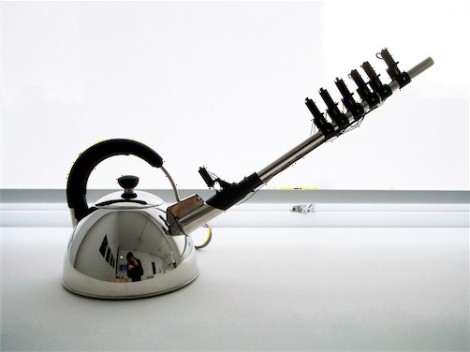[Colin Furze] is just showing off in this picture. His pulse jet tea kettle is built well enough to get by without help from a blow torch, but who can blame his showmanship? In fact, once it’s running there’s no flame to be seen. That’s because the combustion happens at an earlier stage of that pipe, heating a segment that is submerged in water so that you may have your tea in no time.
Once this thing is tuned up it roars like a robotic lion. [Colin] yells his commentary at the camera, but it is picked up as nothing more than a blip of distortion. Pressurized propane and air both feed into the jet. they’re regulated by the two knobs on the base of the unit (that enclosure is actually just a pie tin). There is also a 9V battery-powered igniter built into the base. You can see how the unit was built in the video after the break.













